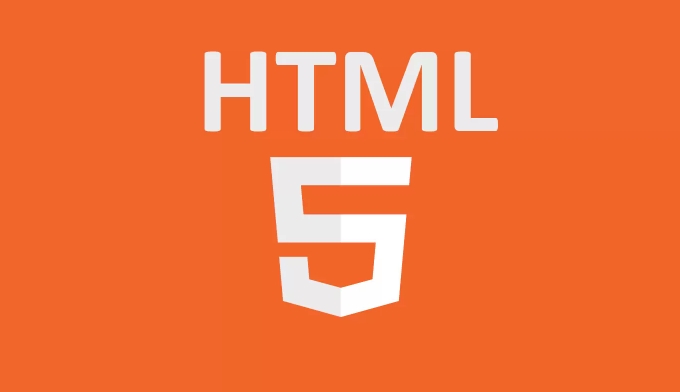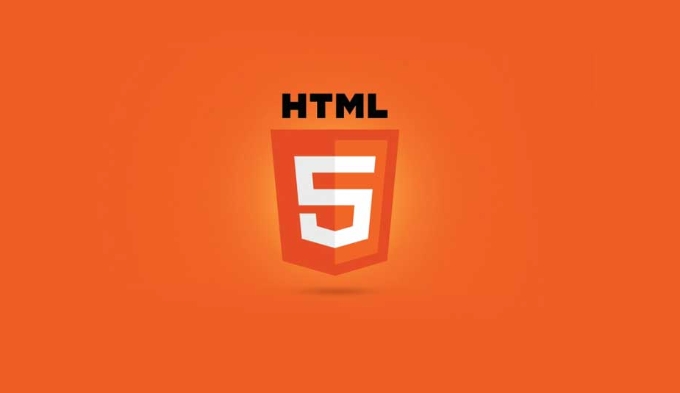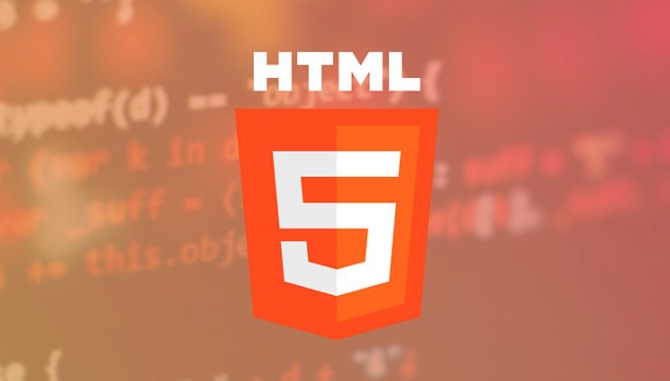To set clickable links for different parts of the image, use the HTML

When you want to turn different parts of an image into clickable links, the <map></map> and <area> tags in HTML are what you need. They let you define multiple clickable regions on a single image, each linking to a different URL.

How the map and area tags work together
The basic idea is to use the <img src="/static/imghw/default1.png" data-src="https://img.php.cn/upload/article/000/000/000/175217331610349.jpeg" class="lazy" alt="How to use the map and area tags for an HTML image map?" > tag with a usemap attribute that points to a <map></map> element by its name . Inside the <map></map> , you place one or more <area> tags that define the clickable areas on the image.

Here's how they connect:
- The
<img src="/static/imghw/default1.png" data-src="https://img.php.cn/upload/article/000/000/000/175217331749586.jpeg" class="lazy" alt="How to use the map and area tags for an HTML image map?" >hasusemap="#map-name"to link it to the map. - The
<map name="map-name"></map>contains all the<area>definitions. - Each
<area>specifies a shape, coordinates, and a link.
This setup lets users click on different parts of the image and go to different pages — useful for things like interactive infographics or navigation menus based on images.

Defining clickable areas with the area tag
Each <area> defines a clickable region. You can set the shape ( rect , circle , or poly ) and provide coordinates that match your image.
For example:
<map name="image-map"> <area shape="rect" coordinates="0,0,100,100" href="https://example.com/section1" alt="Section 1"> <area shape="circle" coordinates="200,200,50" href="https://example.com/section2" alt="Section 2"> </map>
Some key points:
- Coordinates are based on pixels from the top-left corner of the image.
- The
altattribute helps with accessibility and SEO. - Make sure the shapes don't overlap too much, or it might confuse users.
You can have as many areas as needed inside one map.
Matching image size and coordinates accurately
One common issue is mismatched coordinates when the image scales. If your image isn't displayed at its original size (say, using CSS to resize), the coordinates won't line up correctly.
To avoid this:
- Use the native image size or scale the image responsively while keeping the aspect ratio.
- Tools like image map generators can help calculate coordinates based on the actual display size.
- Test the image map across screen sizes to make sure the links still work.
Also, remember that coordinates are ordered like this:
-
rect: left, top, right, bottom -
circle: center x, center y, radius -
poly: pairs of x,y for each point
Getting these values ??right is cruel for accurate clicks.
Adding toolstips and accessibility support
Since image maps are visual, making them accessible is important. The alt attribute in each <area> helps screen readers understand what each region does. Also, browsers show the alt text as a tooltip when hovering over an area.
If you want custom toolstips or extra interactivity:
- Use the
titleattribute in the<area>for browser tooltips. - Add JavaScript event handlers for hover effects or dynamic behavior.
For example:
<area shape="rect" coordinates="0,0,100,100" href="https://example.com/section1" alt="Go to Section 1" title="Section One">
This makes the image map both user-friendly and accessible.
Basically that's it.
The above is the detailed content of How to use the map and area tags for an HTML image map?. For more information, please follow other related articles on the PHP Chinese website!

Hot AI Tools

Undress AI Tool
Undress images for free

Undresser.AI Undress
AI-powered app for creating realistic nude photos

AI Clothes Remover
Online AI tool for removing clothes from photos.

Clothoff.io
AI clothes remover

Video Face Swap
Swap faces in any video effortlessly with our completely free AI face swap tool!

Hot Article

Hot Tools

Notepad++7.3.1
Easy-to-use and free code editor

SublimeText3 Chinese version
Chinese version, very easy to use

Zend Studio 13.0.1
Powerful PHP integrated development environment

Dreamweaver CS6
Visual web development tools

SublimeText3 Mac version
God-level code editing software (SublimeText3)

Hot Topics
 Explain the purpose of the role attribute in ARIA.
Jun 14, 2025 am 12:35 AM
Explain the purpose of the role attribute in ARIA.
Jun 14, 2025 am 12:35 AM
ARIA's role attribute is used to define the role of web elements and improve accessibility. 1. Role attribute helps assistive technology to understand the functions of elements, such as buttons, navigation, etc. 2. Use role attributes to assign specific roles to non-semantic HTML elements. 3. The role attribute should be consistent with the element behavior and be verified by the accessibility tool test.
 HTML and Design: Creating the Visual Layout of Websites
Jun 14, 2025 am 12:39 AM
HTML and Design: Creating the Visual Layout of Websites
Jun 14, 2025 am 12:39 AM
How to create a website layout? 1. Use HTML tags to define the content structure, such as, ,. 2. Control styles and positions through CSS, using box model, float or Flexbox layout. 3. Optimize performance, reduce HTTP requests, use cache and optimize images, and ensure responsive design.
 How do I stay up-to-date with the latest HTML standards and best practices?
Jun 20, 2025 am 08:33 AM
How do I stay up-to-date with the latest HTML standards and best practices?
Jun 20, 2025 am 08:33 AM
The key to keep up with HTML standards and best practices is to do it intentionally rather than follow it blindly. First, follow the summary or update logs of official sources such as WHATWG and W3C, understand new tags (such as) and attributes, and use them as references to solve difficult problems; second, subscribe to trusted web development newsletters and blogs, spend 10-15 minutes a week to browse updates, focus on actual use cases rather than just collecting articles; second, use developer tools and linters such as HTMLHint to optimize the code structure through instant feedback; finally, interact with the developer community, share experiences and learn other people's practical skills, so as to continuously improve HTML skills.
 How do I use the element to represent the main content of a document?
Jun 19, 2025 pm 11:09 PM
How do I use the element to represent the main content of a document?
Jun 19, 2025 pm 11:09 PM
The reason for using tags is to improve the semantic structure and accessibility of web pages, make it easier for screen readers and search engines to understand page content, and allow users to quickly jump to core content. Here are the key points: 1. Each page should contain only one element; 2. It should not include content that is repeated across pages (such as sidebars or footers); 3. It can be used in conjunction with ARIA properties to enhance accessibility. Usually located after and before, it is used to wrap unique page content, such as articles, forms or product details, and should be avoided in, or in; to improve accessibility, aria-labeledby or aria-label can be used to clearly identify parts.
 How do I create a basic HTML document?
Jun 19, 2025 pm 11:01 PM
How do I create a basic HTML document?
Jun 19, 2025 pm 11:01 PM
To create a basic HTML document, you first need to understand its basic structure and write code in a standard format. 1. Use the declaration document type at the beginning; 2. Use the tag to wrap the entire content; 3. Include and two main parts in it, which are used to store metadata such as titles, style sheet links, etc., and include user-visible content such as titles, paragraphs, pictures and links; 4. Save the file in .html format and open the viewing effect in the browser; 5. Then you can gradually add more elements to enrich the page content. Follow these steps to quickly build a basic web page.
 How do I create checkboxes in HTML using the element?
Jun 19, 2025 pm 11:41 PM
How do I create checkboxes in HTML using the element?
Jun 19, 2025 pm 11:41 PM
To create an HTML checkbox, use the type attribute to set the element of the checkbox. 1. The basic structure includes id, name and label tags to ensure that clicking text can switch options; 2. Multiple related check boxes should use the same name but different values, and wrap them with fieldset to improve accessibility; 3. Hide native controls when customizing styles and use CSS to design alternative elements while maintaining the complete functions; 4. Ensure availability, pair labels, support keyboard navigation, and avoid relying on only visual prompts. The above steps can help developers correctly implement checkbox components that have both functional and aesthetics.
 How do I minimize the size of HTML files?
Jun 24, 2025 am 12:53 AM
How do I minimize the size of HTML files?
Jun 24, 2025 am 12:53 AM
To reduce the size of HTML files, you need to clean up redundant code, compress content, and optimize structure. 1. Delete unused tags, comments and extra blanks to reduce volume; 2. Move inline CSS and JavaScript to external files and merge multiple scripts or style blocks; 3. Simplify label syntax without affecting parsing, such as omitting optional closed tags or using short attributes; 4. After cleaning, enable server-side compression technologies such as Gzip or Brotli to further reduce the transmission volume. These steps can significantly improve page loading performance without sacrificing functionality.
 How do I embed video in HTML using the element?
Jun 20, 2025 am 10:09 AM
How do I embed video in HTML using the element?
Jun 20, 2025 am 10:09 AM
To embed videos in HTML, use tags and specify the video source and attributes. 1. Use src attributes or elements to define the video path and format; 2. Add basic attributes such as controls, width, height; 3. To be compatible with different browsers, you can list MP4, WebM, Ogg and other formats; 4. Use controls, autoplay, muted, loop, preload and other attributes to control the playback behavior; 5. Use CSS to realize responsive layout to ensure that it is adapted to different screens. Correct combination of structure and attributes can ensure good display and functional support of the video.






